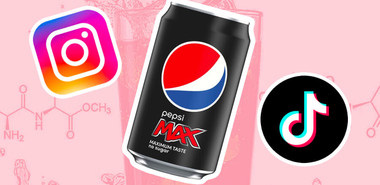Protein is crucial for our bodies. It helps with healing, building new tissues, and keeping our muscles, skin, and hair healthy. Unlike fats and carbs, our body can’t store protein, so we need to eat it every day.
But what kind of protein should we eat? There’s a bit of a debate about whether animal or plant proteins are better. This is important for anyone looking to improve their diet, especially if you’re into fitness and want to recover better after workouts or grow your muscles.
What’s in Protein?
Proteins are made from amino acids, which are like building blocks. We need 22 types of amino acids, and our body can’t make 9 of them – these are called essential amino acids.
Fitness enthusiasts believe that we should eat complete proteins, which have all these essential amino acids, to perform and recover well.
Plant vs. Animal Protein Sources
Protein is key for our health, but not all protein sources are the same. Animal products usually give us all the amino acids we need. Plant-based proteins can too, but you often need to combine different types to get the full set.
Complete Protein from Animal Sources:
- Fish
- Eggs
- Dairy products (whey, cheese, milk)
- Red meat (beef, pork, venison)
- White meat (chicken, turkey)
Complete Protein from Plant Sources (but in lower amounts):
- Quinoa
- Buckwheat
Mix these Plant-Based Proteins for a Full Set of Amino Acids:
- Grains, pulses, and lentils
- Nuts
- Beans and legumes
- Soy
- Hemp
- Rice
- Peas
Animal proteins typically pack more amino acids per serving. For example, an egg has 6 grams of protein with fewer calories compared to beans, which require more calories for the same amount of protein.
Plus, plant-based options often come with extra carbs or fats. So, if you’re focusing on protein, animal sources might be more straightforward. But if you’re plant-based, variety is key to getting all your amino acids.
Is Plant or Animal Protein Better for Your Overall Health?
Here’s where things get trickier. Plant-based proteins come with lots of health benefits compared to animal proteins. They might not be as rich in protein, but they have other good stuff:
- More fiber, which is great for your digestion and keeping your heart healthy.
- Special nutrients and antioxidants not found in meat.
- Less unhealthy fats that you often find in meat.
Eating more plants can help lower heart disease risk, improve your cholesterol levels, reduce blood pressure, and cut down salt in your diet.
But, eating a lot of meat isn’t always bad for your health unless it’s combined with other unhealthy habits like eating lots of bad fats or processed foods, smoking, or not exercising.
Also, meat has some nutrients like vitamin B-12 and iron that are less common in plant foods, which are important for energy and healthy blood.
The short answer is: for the healthiest diet, eat a balance of both animal and plant-based protein sources.
What Protein Source is Best for Athletes?
Many athletes prefer whey protein because it’s a complete, high-quality protein, making it great for building muscle and recovery. It’s popular in shakes and can make up a large part of some diets.
Rice protein is also gaining attention. While it’s not a complete protein (missing some amino acids), it can still be beneficial, similar to whey, if you add other proteins to fill in the gaps.
You have two main choices:
- Stick mainly to animal proteins like whey, which are complete and easy to include in your diet.
- Choose plant-based proteins for variety. You’ll need to mix different types to get all the amino acids you need and maybe add supplements.
Both are good options, depending on your preferences and dietary needs.
How to Structure Your Protein Intake
Some people now think that the total amount of protein you eat is more important than where it comes from. They believe as long as you eat enough protein, the specifics aren’t as critical.
This means considering how much protein you eat, the variety of your sources, and the extra health benefits each type offers. I aim for a diet with lots of different protein sources.
I often drink whey protein, especially around my workouts, because it’s convenient and effective. I also eat plenty of eggs for their complete protein and healthy fats, and I like high-protein Skyr yoghurt.
For my gut health, I add plant-based proteins like lentils and beans to my diet. They’re high in fiber. I love dishes like Indian dal and beans on toast with eggs for breakfast. I also eat green, leafy veggies for their fiber, though they also provide some protein.
All these foods together help me reach my protein goals, keep my energy high, and maintain my health, especially with my gym routine.
Protein Diet FAQs
What are the benefits of consuming enough protein in my diet?
Consuming enough protein is essential for good health. It helps with muscle repair and building, supports bone health, aids in weight management by keeping you feeling full longer, and plays a crucial role in bodily functions like hormone and enzyme production.
How much protein do I need each day?
The amount of protein you need can vary based on factors like age, sex, activity level, and health goals. Generally, a good starting point is 0.8 grams of protein per kilogram of body weight. For those who are more active or looking to build muscle, this amount may increase to 1.2 to 2.0 grams per kilogram.
Can I get enough protein from a plant-based diet?
Yes, you can get enough protein from a plant-based diet, but it requires careful planning. You’ll need to consume a variety of protein sources to ensure you’re getting all essential amino acids, such as grains, legumes, nuts, and seeds.
Is it safe to consume protein supplements like whey protein?
Protein supplements, like whey protein, can be a convenient way to increase your protein intake, especially around workouts. They are generally safe for most people, but it’s always best to get protein from whole food sources when possible. If you have any health conditions or dietary restrictions, consult with a healthcare professional before adding supplements to your diet.
Explore in more detail:
- Best High-Protein Snacks for Weight Loss, Muscle Gain, & Satiety
- Highest Protein Vegetables
- Top High-Protein Meal Plans for a High-Protein Diet
- High-Protein Diet Tips for Beginners
- 10 Cheap Ways to Add Protein to Your Breakfast
- High-Protein Diet Side Effects and Risks
- High Protein Foods for Muscle Gain and Weight Loss



